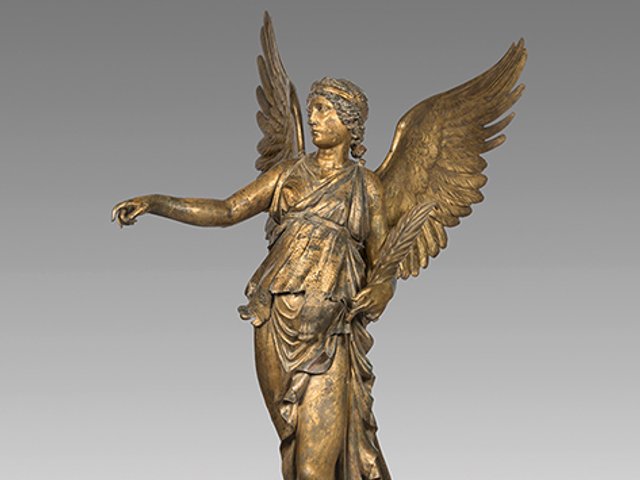St Petersburg
After a meeting of Russian and German cultural ministers in early October both countries agreed that more cultural valuables taken by the Soviet Union after World War II will be returned to Germany.
Officials expect to soon sign an agreement that will lead to the return of a rare 15th-century stained-glass window taken from the Marienkirche in Frankfurt on the Oder in 1945, but which is now in an attic in the State Hermitage Museum.
The cathedral, nearly totally destroyed during the war, is now undergoing reconstruction. The German government plans to complete the job in time for the city's 750th anniversary in 2003, and wants the window returned by that time as well. “In return for giving back the stained-glass window, Germany will rebuild one 14th-century church in the Pskov region which was totally destroyed during the war,” said Anatoli Vilkov, head of the Culture Ministry’s department for Preserving Cultural Valuables. “We are not talking about a mass restitution here; just the return of concrete items.”
Officials would not specify the amount to be spent on the new church.
In 1943, in order to protect the window from Allied bombs, the Germans disassembled it into 111 individual panels, each approximately 33 inches high and about 20 inches wide, and sent them for storage in Potsdam, which the Soviets overran in 1946.
While the glass is in relatively good condition, according to Hermitage director, Mikhail Piotrovsky. The lead grating which holds the entire window together is brittle and in need of restoration.
Moving them at the moment is impossible, he added, and a group of German and Russian specialists will begin restoration at the Hermitage next year.
“We want to restore it first, display it in Russia, and then return it” said Dr Piotrovsky. “We have to do this in such a manner so there won’t be a negative reaction in Russia from nationalists”.
The window is especially prized because the subject matter is rarely depicted in detail, showing the anti-Christ his arrival on earth and life among humans during the Apocalypse.
The pending swap follows a similar deal made in the spring when Germany returned Russia two items, a Florentine mosaic and a 18th-century bureau, stolen by Nazi troops in 1941 from the Amber Room in St Petersburg’s Yekaterinsky palace. In exchange, a collection of drawings taken from a Bremen art museum by a Russian soldier during the war were returned to Germany. German officials hope more swaps will be forthcoming.
Russia unilaterally returned nearly 2 million pieces to East Germany and Poland in the mid 1950s, and among which were the Pergamon Museum artifacts. Former Soviet leader, Mikhail Gorbachev promised in 1990 to return much of Germany’s cultural valuables, as did President Boris Yeltsin. But the State Duma, which has long been controlled by communist and nationalist deputies, foiled such moves. The new round of negotiations is possible thanks to Russia’s much maligned 1997 law on cultural valuables. In spring, an amended version passed the country’s parliament.
While the law says all art on Russian territory taken from Germany during the war is Russian state property, it allows for the restitution of art works taken from victims of the Nazi regime, as well as those taken from religious and charitable organisations.
While Germany says the Russian law does not adhere to practices of international law, it is willing to strike deals with Russia. “We are certainly willing to do our part to help restore specific sites and objects and retrieve objects that were either destroyed or disappeared during the War,” said Mr Naumann.


